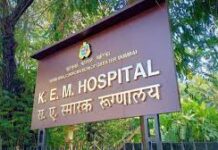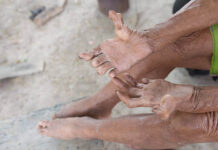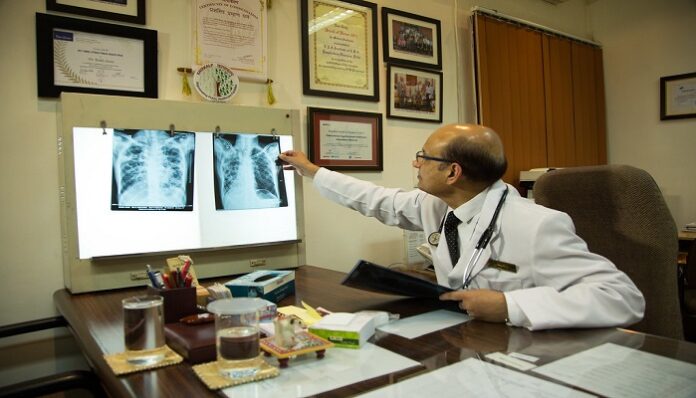Abstract
India has been engaged in Tuberculosis control activities for more than 50 years. In spite of this, tuberculosis (TB) continues to be India’s severest health crisis. It is reported that 27% of the total TB cases occur in India. India now possesses advanced technology and effective interventions for diagnosis, treatment and care of TB. With this confidence, the Govt. of India has decided to utilise its full potential and propose transformational changes to end TB by 2025 ahead of the WHO target. This article analyses two ambitious projects in the tuberculosis control activities, which includes system for TB elimination in private sector (STEPS) and the programmatic management of TB infection (PMLTBI).
Introduction
The World Health Organisation’s (WHO) End TB strategy was adopted by the World Health Assembly in the year 2014. It served as a means to fast track all tuberculosis (TB) control activities by setting ambitious targets to be achieved by 2035 and bring us closer to the ever-elusive goal of TB elimination. The Government of India has taken this a step further and set a target of TB elimination by 2025 through their recently renamed National TB Elimination Program (NTEP). The national strategic plan (NSP) for 2017-2030 proposes bold strategies with commensurate resources to rapidly decline TB in the country by 2030, in line with the global End TB targets and Sustainable Development Goals to attain the vision of a TB-free India. The goal is to achieve a rapid decline in burden of TB, morbidity and mortality while working towards elimination of TB in India by 2025. Similar programs in the past have only succeeded in partially attaining their set targets. Although India has managed to scale up basic TB services in the public health system, treating more than 10 million TB patients under RNTCP, the rate of decline is too slow to meet the 2030 Sustainable Development Goals (SDG) and 2035 End TB targets. This has compelled policy makers to enforce stringent measures and to abandon any complacency in the implementation of them. Two such measures undertaken by the Kerala TB Elimination mission in the state include the System for TB elimination in Private Sector (STEPS) and the programmatic management of latent TB infection (PMLTBI).
The WHO, through programmes like the private-public mix (PPM) initiative, has been urging policy makers to take into confidence the healthcare providers in the private sector since 2003.[1] However, availability of TB medications in the open market and the indiscriminate use of fluoroquinolones and aminoglycosides, like amikacin, in the private sector indicate that we have failed in this regard. To put matters into perspective, 20,992 patients were registered for TB treatment under RNTCP in 2018. Of these, an estimated 8,000 patients were receiving anti- TB medications from private sector in Kerala and approximately 4,000 patients were missing from the official TB surveillance system.[2] Though the physicians in the state may boast a reasonable standard of care and cure rate, losing patients to follow up may prove to be a menace in this country which harbours 24% of the global multi-drug resistant TB (MDR-TB) cases.[3]
System for TB Elimination in Private Sector (STEPS)
The joint effort for elimination of TB (JEET) consortium, has taken promising steps in this regard by forging a symbiotic relationship with the healthcare provider in the private sector through their STEPS programme. Rather than encouraging the referral and further follow up of TB patient in the government sector, the emphasis has been to streamline the TB care activities in the private institutions, which they have designated as STEPS centres. This is done by funnelling all the TB care activities in the STEPS centre to a single focal point and ensuring a single window notification. In return, the STEPS centres are entitled to free diagnostics like cartridge based nucleic acid amplification test (CBNAAT), line probe assay (LPA) and culture and drug sensitivity testing (DST); regular supply of fixed dose combinations (FDCs) and loose antitubercular therapy (ATT) drugs, air borne infection control kits and various public health actions including contact tracing, chemoprophylaxis, linkages to TB pension, nutritional support and social welfare schemes; support for training, notifications and updating in NIKSHAY. The JEET consortium is hoping to extend its reach to 23 states across India in the coming 3 years and is leaving no stone unturned to achieve our goal of a TB free India.[4]
As per the recommendation of the WHO, a formal evaluation of the activities of STEPS was conducted in Kerala in order to judge its success and plan its expansion to other states. The results of this evaluation with regards to the quality of TB care have been promising. This is reflected in an improvement in the notification of microbiologically confirmed TB cases in the private sector and an improvement in the treatment success rates. Besides this, the evaluation also noted a steep decline in the sale of private anti-TB medications in the district, ensured continuity of patient care even during the COVID-19 pandemic and regular feedback and follow-up of patients with the doctors. STEPS has, hence, successfully addressed the gaps in the quality of care for TB patients in the private sector.[5]
Latent TB Infection (LTBI)
Latent TB infection (LTBI) is a state of persistent immune response to stimulation by tuberculous antigens with no evidence of clinically significant active tuberculosis. This entity is ignored in high-burden and low-income countries like India since these patients are asymptomatic, do not become sick and are not at risk of transmitting the infection. However, since other strategies in TB prevention, like airborne infection control, has its limitations; treatment of latent TB seems to be our best bet. That is why it has found its place as one of the core components in the End TB strategy of the WHO. The TB strategist in our country have also adopted this in the NTEP.
On analyzing the risk factors attributed to the progression of latent TB to active TB, it becomes evident why such a vast amount of our nation’s resources is allocated to identifying and treating patient with LTBI. India is a country where there is no dearth of diabetics, homeless people, PLHIV, persons exposed to silica dust or patients on immunosuppressive medications. The COVID-19 pandemic has also seen a sharp rise in patients receiving corticosteroids. Hence, it would come as no surprise if there occurs a sharp rise in the number of active TB cases and it would make sense to squelch it early on by identifying and treating latent TB patients. Treating LTBI requires minimal drugs and reduces the risk of TB disease by 90%.
The Akshaya Keralam Campaign was launched in the state in October 2020 in order to identify undiagnosed TB cases in the community. PMLTBI was rolled out as a part of this campaign, which highlighted the importance of testing and treating latent TB infection in children less than 15 years of age. The testing strategy commonly used in resource limited high burden countries like ours for diagnosing LTBI is tuberculin skin testing. Since it is confounded by BCG vaccination, we can only interpret its result with caution in our country. Thus, IGRAs seem to be the way forward. In order to ensure that this expensive test is being judiciously used, the cascade of care approach has been advocated by the PMLTBI in Kerala. Through this, the entire patient journey from the identification and screening of LTBI to the completion of treatment is charted out. Children between 5–15 years of age constitute the target population and household contacts of TB, immunosuppressed children (on immunosuppressive drugs, receiving dialysis etc.) are the high-risk groups identified. Since IGRA can also be positive in patients with active TB, it has to be ruled out before initiation of treatment. The regimen of 3 months of rifampicin and isoniazid (3HR) is then followed for treatment wherein daily doses of isoniazid and Rifampicin are given for 3 months.[6] Since pediatricians in our state are familiar with this readily available drug combination, it should be implemented with relative ease.
The STEPS program and PMLTBI have provided some much-needed optimism to health care providers in Kerala. Countries like Vietnam and Japan have successfully been treating LTBI, and their results have been promising.[7, 8] Provided the necessary funding is made available to implement these projects, we can expect a significant improvement in the TB statistics in our country. This will help ease the burden on our healthcare system. Only time will tell whether we will be able to achieve a TB-free India. However, these reforms that have been enforced are like a breath of fresh air during these troubled times.
Conclusion
It is important to recognize that more efforts are needed to drastically reduce the TB incidence in India. India needs aspirational objectives, a thoughtful and structured approach and a supportive environment to achieve the target of end TB. In line with other health sector strategies and global efforts, such as the draft National Health Policy 2015, WHO’s End TB Strategy, and the Sustainable Development Goals (SDGs) of the United Nations (UN), bold and innovative steps are proposed by the Government to eliminate TB in India by 2025.
References
1. Public-Private Mix for DOTS Practical tools to help implementation TB Strategy and Operations Stop TB Department [Internet]. 2003. Available from: http://www.who.int/gtb
2. Guidance document on STEPS (System for TB Elimination in Private Sector) in Kerala Background [Internet]. [cited 2021 May 19]. Available from: https://dhs.kerala.gov.in/wp-content/uploads/2021/01/STEPS-Guidelines.pdf
3. Charan J, Tank N, Reljic T, Singh S, Bhardwaj P, Kaur R, et al. Prevalence of multidrug resistance tuberculosis in adult patients in India: A systematic review and meta-analysis. J Family Med Prim Care. 2019;8(10):3191–3201.
4. Joint Effort for Elimination of Tuberculosis consortium. JEET Annual Report 2019 [Internet]. [Cited 2021 May 20]. Available from: https://www.projectjeet.in/wp-content/uploads/2020/10/JEET-Annual-Report-2019_Low-Res.pdf
5. Rakesh PS, Balakrishnan S, Sunilkumar M, Alexander KG, Vijayan S, Roddawar V, et al. STEPS – a patient centric and low-cost solution to ensure standards of TB care to patients reaching private sector in India. BMC Health Services Research. 2022 Dec 1;22(1).
6. Government of Kerala. Guidance document for the peoples’ movement against Tuberculosis in Kerala. Kerala TB Elimination Mission Principles, Strategies and Activities [Internet]. [Cited 2021 May 20]. Available from: https://dhs.kerala.gov.in/wp-content/uploads/2021/01/KeralaTB-Elimination-Mission_Strategy-activity-plan-and-budget.pdf
7. Izumi K, Ohkado A, Uchimura K, Kawatsu L, Suenaga M, Urakawa M, et al. Evaluation of tuberculosis contact investigations in Japan. International Journal of Tuberculosis and Lung Disease. 2017;21(2):188–95.
8. Paton NI, Borand L, Benedicto J, Kyi MM, Mahmud AM, Norazmi MN, et al. Diagnosis and management of latent tuberculosis infection in Asia: Review of current status and challenges. International Journal of Infectious Diseases. Elsevier. 2019; 87:21-29.
+

























